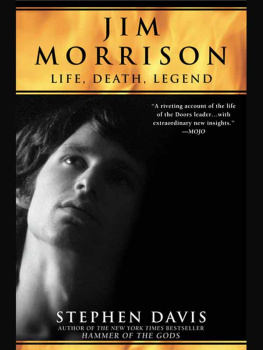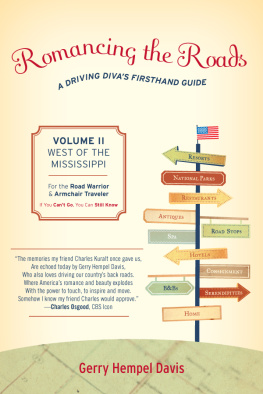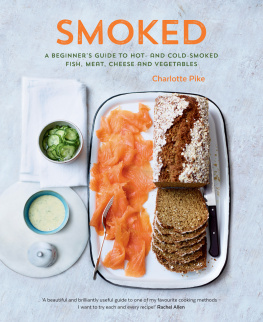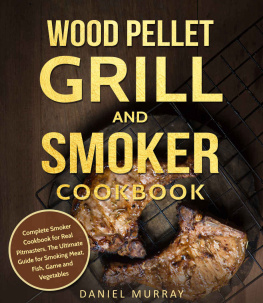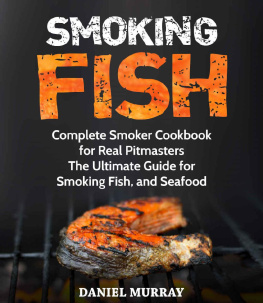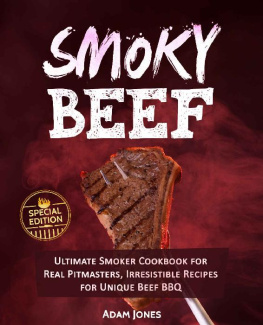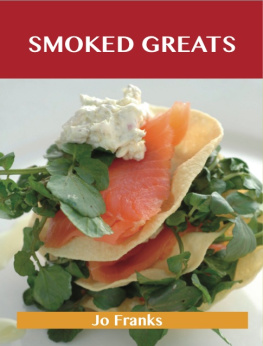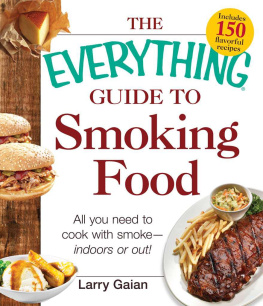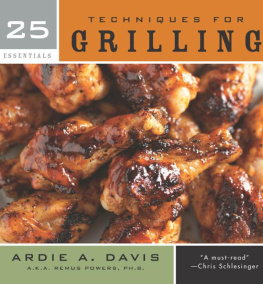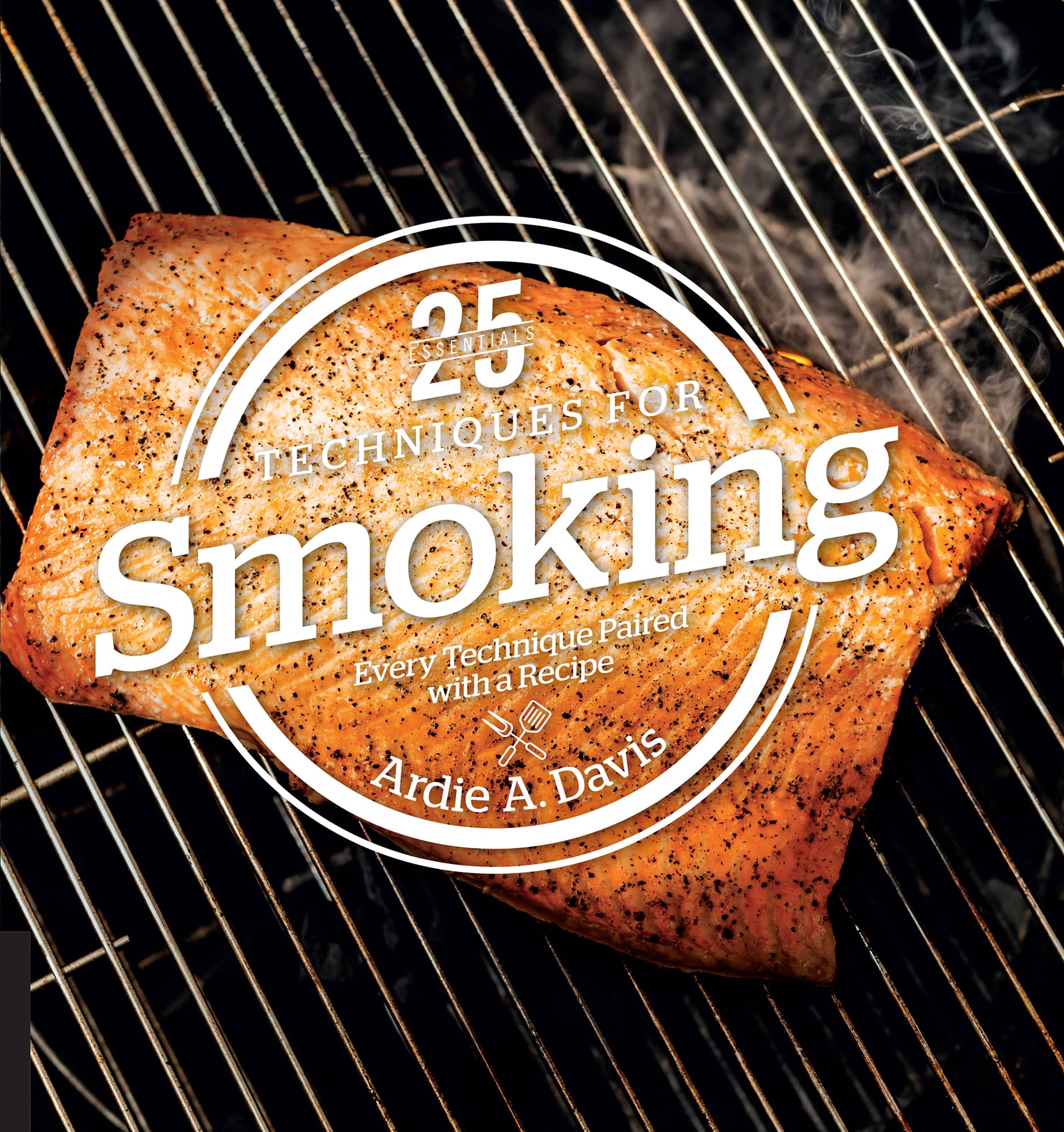Acknowledgments
All who engage in the art, science, business, or sport of barbecue at its best are standing on the shoulders of past and present pitmasters.
Many past pitmasters have slipped into anonymity, but we still feel their influence. Of those who are not anonymous, my thanks go out to the following who have been of great help and inspiration to me on my barbecue journey:
Paul Kirk, Carolyn Wells, Judith Fertig,
Karen Adler, John Willingham, Smoky Hale,
John Raven, Bob Lyon, Dennis Hayes,
Phil Litman, Rick Browne, Nick Spinelli,
Steven Raichlen, Chris Schlesinger,
Tana Shupe, Charlie Vergos,
to name a few among many.
Thanks also to:
Art Davis, Al Lawson, Jim Quessenberry, Gary Wells, Jack Kay and John Beadle, may they rest in peace.
Special thanks to my wife, Gretchen, for her love and encouragement, and for making possible the time and space in which to do this book.
Finally, a hearty thanks to Judith Fertig (again), Valerie Cimino, and Michele Caterina for a superb job of editing. It was delightful to work with you!
Introduction
Drop the word barbecue into any gathering and youll stir up a hubbub of chatter about who makes it best. Most people think theirs is the best, or that the best is sold at a little rib joint they have frequented in their hometown since childhood.
Theres a lot of hype in the world of barbecue. Boasts of world famous, legendary, award winning, and world champion abound. Newcomers to barbecue could easily get the impression that the field is too crowded with famous, awardwinning, world-champion legends to make room for more. Dont be discouraged by the hoopla. There is room around the pit for you. Youll find that barbecuers are among the friendliest people on earth. They love to share what they know with anyone who wants to learn.
Mastering the barbecue method of cooking takes a long time. Becoming famous for your barbecue takes even longer. I dont know a single world-famous pitmaster who won fame overnight.
This book is built on the philosophy that every pitmaster should first learn the essentials: fire, smoke, and minimal seasonings. Barbecue as practiced in these pages is a method of cooking meats for several hours, usually at a temperature of 225 to 250F, in a charcoal or gas grill, cooker, smoker, or pit with wood smoke and hardwood charcoal or charcoal briquets. In barbecue circles we call it the lowand-slow method, compared to grilling hot and fast. For some recipes that dont require a long smoking time, you can use a gas grill, but for real, true barbecue, charcoal is best. Experiencing the flavor of meat cooked with fire and smoke will serve as your touchstone for evaluating barbecue that has been seasoned with herbs, spices, sweeteners, and other seasonings. The barbecue recipes in this book, therefore, 12 are light on seasonings. Pepper, salt, garlic, olive oil, and butter are the mainstays. Although there are many excellent sauces and rubs on the market that go well with barbecue (and you may have your favorite homemade versions as well), I advise using them judiciously, and only after youve tasted unseasoned barbecue. Avoid overpowering the wonderful flavor of real barbecued meat. If a sauce or rub doesnt genuinely complement the flavor of your barbecued meat, dont use it.
Learning the basics of barbecue is simple. Simple, however, doesnt mean easy. After becoming skilled at the fundamentals and putting your knowledge to work at the pit, the more you barbecue, the more you improve and learn. You can do it. So if you dream of becoming a barbecue legend, youll get there faster by masteringthese basics. Lets get started!
The Essentials of Barbecue
The barbecue method of cooking is simple. It takes some kind of a pit, along with heat from hardwood or hardwood coals or gas. Time and patience also help.
Barbecue is cooked at low temperatures (225 to 250F) for long periods of timeusually from 4 to 12 or more hours, depending upon the size and composition of the meat. Vegetables, fish, and shellfish can slow smoke in less time. Sometimes, however, you will want to smoke at 350Fto smoke shellfish, to get a bark (also known as a crust or coating) started on pork butt, or to cook a beer-can chicken.
THE MAGIC OF LOW, SLOW HEAT AND SMOKE
You can do wonders with charcoal briquets and wood chips. Hardwood lump charcoal works, but it burns faster and is more expensive than briquets. Slower-burning briquets hold a steady temperature longer, thus requiring fewer times to lift the lid and lose heat.
The most popular woods for adding smoke flavor are:
Hickory, oak, pecan, maple, sassafras, cherry, grapevines, whiskey or wine barrel wood: For medium smoke flavor.
Mesquite: For heavier smoke flavor.
Alder, apple, peach: For somewhat sweet or milder smoke flavor.
For each recipe, I suggest woods that are appropriate to the food. Mesquite on chicken, for example, would be too bitter, while alder on beef would be too mild.
For a kettle grill, you will want to use wood chips. Twice-soaked in water and drained, chips are the easiest to use and are my preference. The first soaking can be as short as 20 minutes or as long as overnight. Drain the water from the first soak, cover the chips with fresh water for another 20 minutes, and drain again before scattering on the hot coals. If youre using a gas grill, youll want to pack dry wood chips into a metal container that will go as close to a burner as you can get it. You dont want to scatter dry chips on gas grill burners, as the chips can clog the burners.
The amount of wood chips I specify in each recipe will yield enough smoke to flavor your food during the first 45 minutes to 1 hour of cooking. There is no need to add more smoke after that. Barbecue cooked with too much smoke will taste bitter.
SMOKERS
Barbecuers call their specially designed slow-smoking units by a lot of different namespits, cookers, smokers, rigsand Ill use them all in this book. With an indirect fire, wood chips, and a lid, you can turn just about any grill into a smoker, but I prefer that icon of the backyard, the 22/-inch charcoal kettle grill. Its basic, but its really all you need.
You can go for a bullet-shaped smoker (charcoal, gas, or electric), a bigger rig with an offset firebox, inexpensive home-built pits, elaborate rigs costing thousands of dollars, or a ceramic smoker like the Big Green Egg. You can also use your gas grill as a smoker for some things that only take about an hour to smoke. But imagine doing a brisket on a gas grill for 12 hoursand how many times youd have to change the cylinder! The best way to learn the basics is on the less expensive, less complex charcoal kettle grill.




